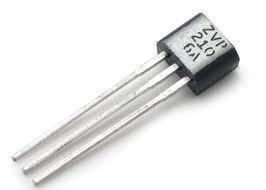What is a Field-Effect Transistor?
A field-effect transistor (FET) is a semi-conductive device that is used in integrated circuits to control the conductivity of a conductive channel. FETs are highly dependent on negative and positive charges. They have many purposes, including limiting a device’s power levels, storing data, and being used as a switch for a wide variety of electronic devices. Various FET designs have been presented and produced since 1925 and have collectively allowed modern electronics to be possible.
How Field-Effect Transistors Work
FETs are dependent on four essential components: the base, the source, the gate, and the drain. An FET’s base is simply the semi-conductive material that the source, gate, and drain are built on. An FET’s source is responsible for generating power and may or may not be attached to the base. An FET’s gate is the channel in which a voltage is transferred through a semiconductor. An FET’s drain absorbs the voltage from the source after it has been transferred through the gate. As a negative voltage passes through an FET’s gate, a region around the gate is formed that is non-conductive and does not allow electrons to pass through it. When a positive voltage is applied to the FET, the charge attracts free electrons within the semiconductor and can travel through the gate from the source to the drain.
Applications
FETs control power to a building or area by supplying energy when a positive voltage is applied and preventing it when a negative voltage is applied. They can also be made of DNA and used as bio-sensors for genetic “off switches.” FETs are used in cameras, audio devices, hard drives and other storage devices, as well as amplifiers.
Advantages
FETs are advantageous because they turn on and off, depending on whether a positive or negative charge is applied to them. FETs are also found in a series of positively and negatively charged FETs so that when one is on, the other is off.


Comments - No Responses to “What is a Field-Effect Transistor?”
Sorry but comments are closed at this time.